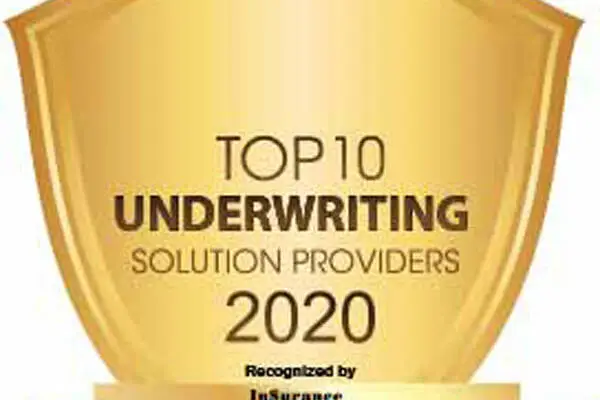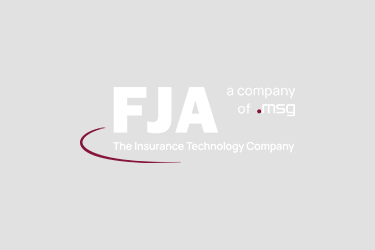by Bryan Lee, VP Risk Solutions
The 2024 RISE Western conference is fast-approaching and while we look forward gathering again in September, there were some major takeaways from the 2024 RISE National conference earlier this year that I expect will continue into our next meeting. While the National conference is always enlightening, this year was different in a few notable ways. Here are a few of my high-level thoughts before jumping into the details.
- The pace of change is accelerated. Medicare Advantage Organizations (MAOs) have come under fire recently. Increasing regulatory oversight and the rapid rise of AI (Artificial Intelligence) has placed greater focus on compliance and made it a hot topic.
- This is a WOW moment for our industry. A couple dozen regulators attended RISE this year, which was most unusual and represented a huge commitment on their part to deliver a message. Four speaking slots were compliance focused. Regulators clearly made a statement intended to grab our attention.
- It is time to pivot. The Wall Street mantra, “Don’t fight the Fed” points out the complete futility of betting against the Federal Reserve. The same can be said of CMS. When CMS is determined to drive change as they clearly are now, we can either embrace it or ultimately be dragged, kicking, and screaming into adopting it anyway. We all know problems exist, and innovative approaches are needed. Why resist? We need to get on board and use the time to get the right tools in place. Change is a process. We are going to have to get out of our comfort zones and embrace progress.
With that backdrop, let’s dig deeper into the changes ahead. Depending on where you sit, you may view the coming changes with apprehension or as opportunities. I encourage you to look at disruption as your moment to innovate and differentiate. As you contemplate each issue, consider. . .
- What are you doing to position your organization for success?
- Are you collecting and evaluating the right analytics?
- Does the data support your processes?
- What story do your analytics tell?
Will Disruption Wreak Havoc or Create Opportunity?
While disruption is coming to many aspects of our industry, here are five areas of focus that were heavily discussed at RISE this year.
Disruption #1: Coding and Payment Inaccuracies
The Centers for Medicare and Medicaid Services (CMS), the Department of Justice (DOJ), and the Office of the Inspector General (OIG) have all been auditing Medicare Advantage Organizations (MAOs) for coding inaccuracies and other issues. Improper payments are a chief concern. According to The CMS, MAOs had an estimated improper payment rate of 6.01% in fiscal year 2023, resulting in a cost of $16.6 billion. HHS (Health and Human Services) has found that unsupported risk adjustment payments are a major driver of improper payments.
Disruption #2: Coding Transparency
The new toolkit provided by HHS OIG provides the information needed to replicate HHS OIG techniques to identify and evaluate high risk diagnosis codes prior to submission. At 48 pages, the toolkit provides many insights, including a list of diagnoses that are frequently miscoded, raising red-flags at CMS and increasing the probability of an OIG audit. This information is intended to eliminate confusion, clarify expectations, and give MAOs a roadmap to help prevent the inaccurate coding that often results in overpayments and fines.
I recommend that all MAOs implement this toolkit. If someone in your organization is preventing you from using it, conversations are in order. They are financially handcuffing you and exposing your organization to potential OIG fines. This tool can tell you exactly which members are at risk and how much the fines will cost when the OIG comes knocking. To give you an idea of this tool’s capabilities, we recently ran a 3-year scenario for a smaller organization and identified an estimated $3.6M in potential fines resulting from just a couple hundred members.
Disruption #3: Use of Health Risk Assessments and Chart Reviews
MAOs may be relying on health risks assessments (HRAs) as a primary tool to collect diagnoses and increase payments. To research the extent of this issue, HHS conducted an analysis of 2016 MAO encounter data and determined the diagnoses that MAOs reported on HRAs alone resulted in approximately $2.6 billion in risk adjusted payments for 2017. In-home HRAs were responsible for 80% of the estimated payments. Most of these in-home HRAs were conducted by companies hired by or contracted with the payer, not the member’s primary care provider. The OIG also found that some MAOs use chart reviews to increase risk adjusted payments. Like HRAs, chart reviews are an allowable source of diagnoses. However, the concern is that payers are over-relying on chart reviews and misusing them to make members appear sicker than they are to drive higher payments.
Disruption #4: New Risk Adjustment Model
CMS is switching from V24 to the V28 risk adjustment model, entailing significant changes including the renaming and renumbering of some codes and the elimination of many others. The new adjustment model may also result in lower risk adjustment factor (RAF) scores, which could impact how much MAOs are paid per beneficiary. These changes will be phased in over the next three years.
Disruption #5: AI Solutions
While AI has been used in health insurance for years, the launch of ChatGPT and the rapid acceleration of tools using large language models have placed technology under the spotlight, illuminating potential privacy, security, and ethical exposures.
Garbage in/garbage out, bias, and automated, wrongful claim denials are just some of the fears of technology gone wrong. That said, AI has the potential to improve processes for Medicare payers – leading to lower costs, increased compliance, and improved member experiences – but caution is necessary when adopting new AI systems that may run afoul of regulations or harm members. This is especially true when AI operates as a “black box,” as there is no explanation of outcomes and no way to audit the decision-making process.
A Tool to Navigate Change and Seize Opportunity
Change will be unavoidable for MAOs, all organizations offering Medicare, Medicaid, and ACA (Affordable Care Act) products, and Provider Organizations enrolled in Medicare’s Shared Savings Program (SSP). Adapting to these changes is going to require new tools that enable organizations to leverage technology while staying on top of shifting compliance requirements.
Which is why I am excited to introduce a new real-time analytic and audit tool from FJA. It is called CATRA, (which is an acronym for Complete, Accurate, Timely, Risk Adjustment), and it is a game changer for companies seeking to reduce fraud, waste, and abuse, and comply with regulatory oversight.
This tool is the result of our team’s collective experience, working closely with CMS to ensure compliance for more than 20 years. Every year, CMS asks CFOs to sign an attestation that they have transmitted complete, accurate and timely risk adjustment data. Ironically, no one can attest to that, given the tools currently available and the timeframe within which they are required to sign it. Now, with CATRA, a CFO can sign it with confidence.
In addition to helping improve performance in the five areas discussed, CATRA enables:
- More accurate and timely results from a concurrent RA process. Concurrent, real-time review of medical diagnoses from a provider ensure you submit all of the codes and only the codes that should be submitted to CMS, eliminating the need for retrospective chart review going forward. The level of error is visible in real time providing you with an opportunity to take action before errors impact your revenue.
- 100% configurable and transparent rules. The app comes preloaded with a default set of rules which you can easily modify in-house as needed. This means you are in control, but you are not starting from nothing. While CATRA is informed by some machine learning, the rules and decision process are fully transparent and does not have the “black box” issues often associated with machine-based learning tools.
- Insights into every risk gap. CATRA provides a 360-degree view of member utilization, medical claims, and laboratory results, with access to the claim, member risk profile, and medical records in one place making it easy to check for discrepancies and inaccuracies. It also flags high-risk diagnoses such as those identified by OIG, enabling you to delay submission while you gather more information from the healthcare provider.
- Dynamic modeling enables you to assess the impact and accuracy of the deployment of planned rules on your population. With CATRA, you can test the potential impact of new parameters and rules and establish a baseline model to serve as a foundation for future rules modeling – all with the goal of accurately reflecting the acuity the membership you serve and ensuring that you are in FULL compliance.
We look forward to seeing you all at RISE West and hearing what has transpired since we last convened in Nashville.
If you are ready to embrace the coming changes and get ahead of the new regulations, FJA can help.
Related Posts
March 17, 2021
Priorities for Insurers in a Post COVID-19 World
COVID-19 has dramatically changed the way customer’s view, buy and assess the…
January 6, 2021
Steering Insurers Ahead in the Digital Era
FJA was named one of the Top 10 Underwriting Solutions of 2020.
September 21, 2020
Build or Buy Software? How Insurance Companies Can Preserve Value
As a former management consultant I was often faced with the question: Build or…


